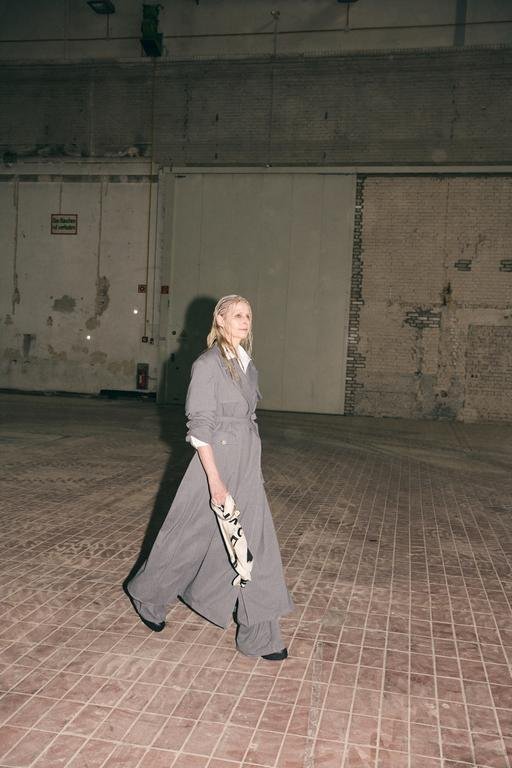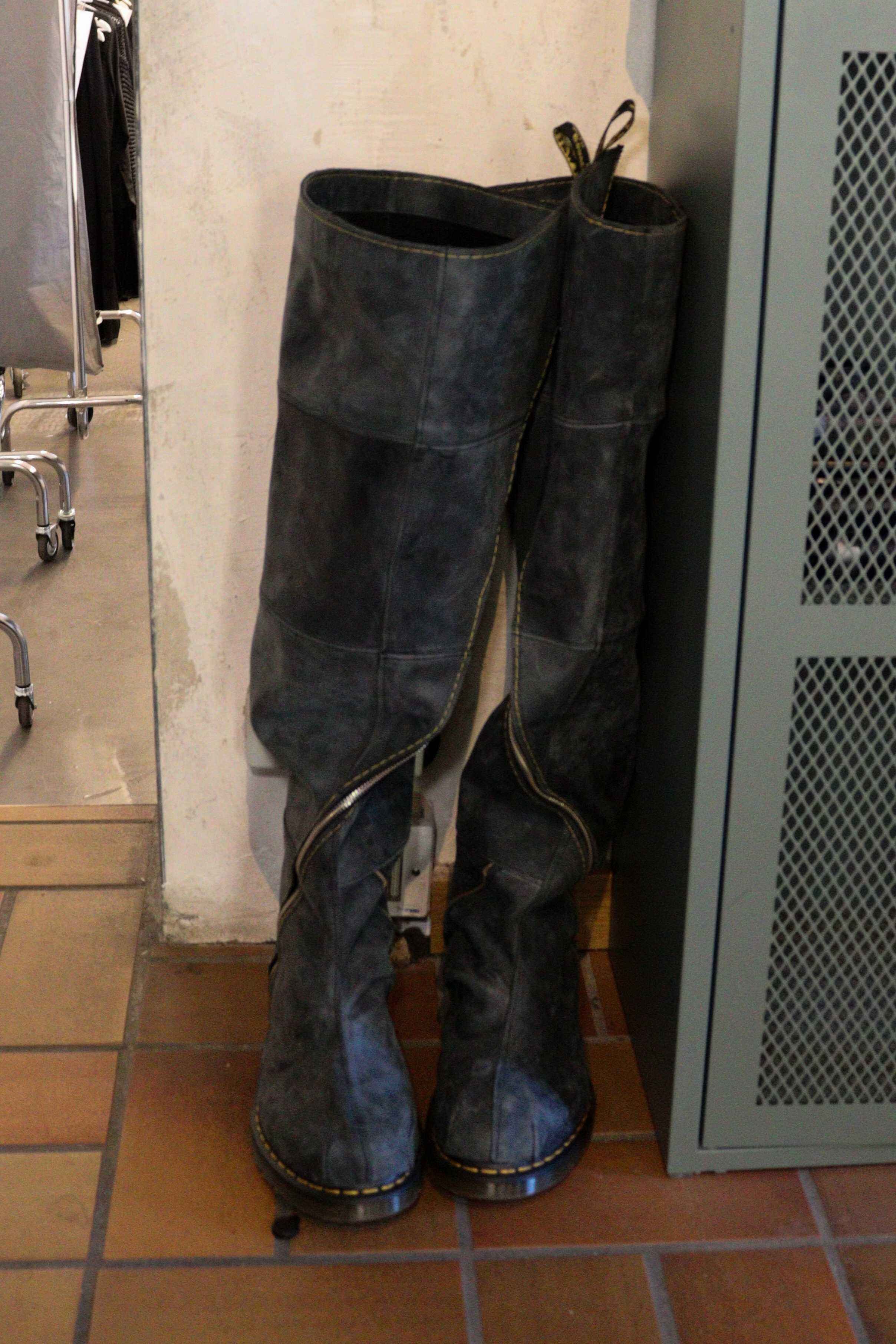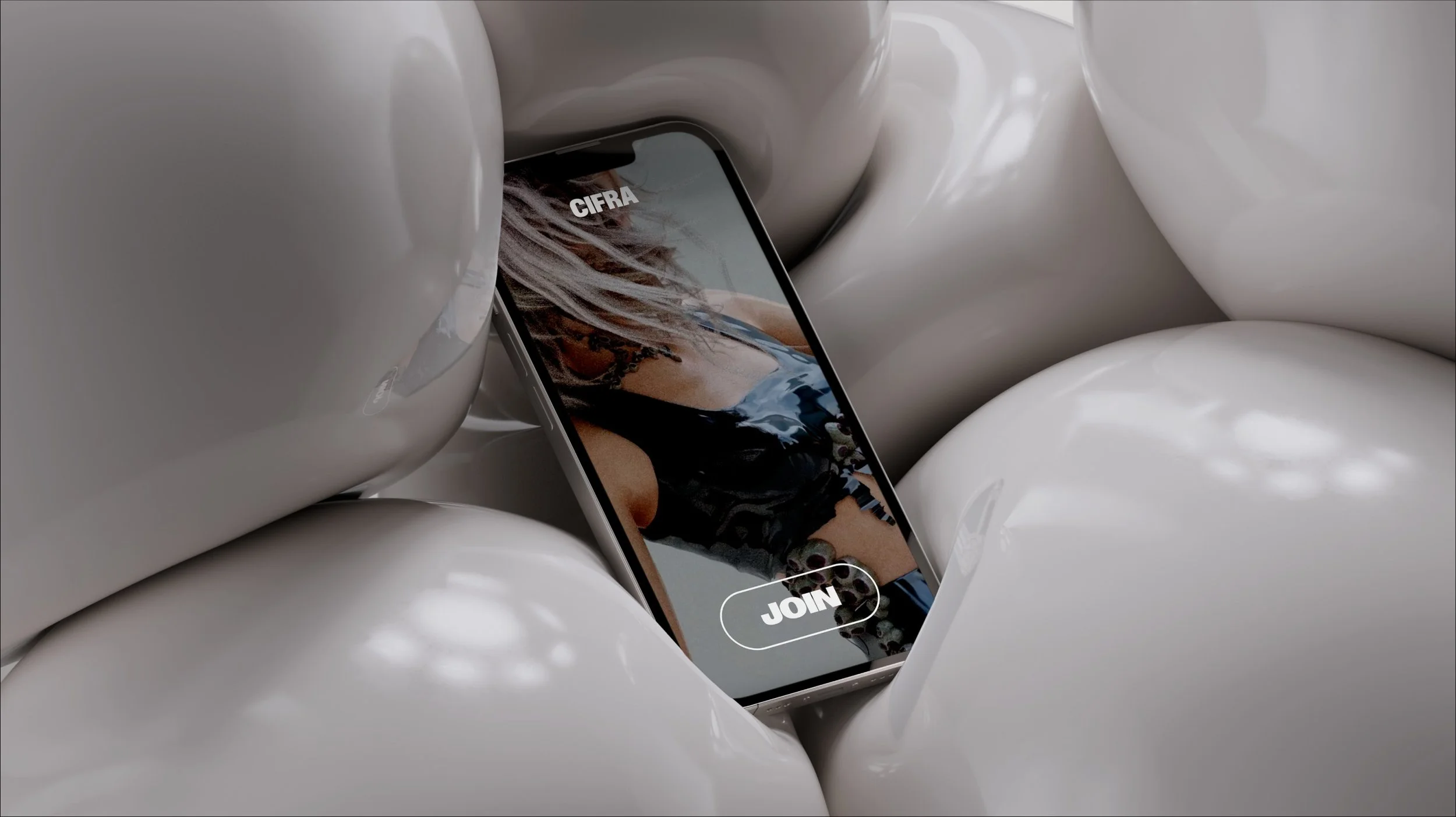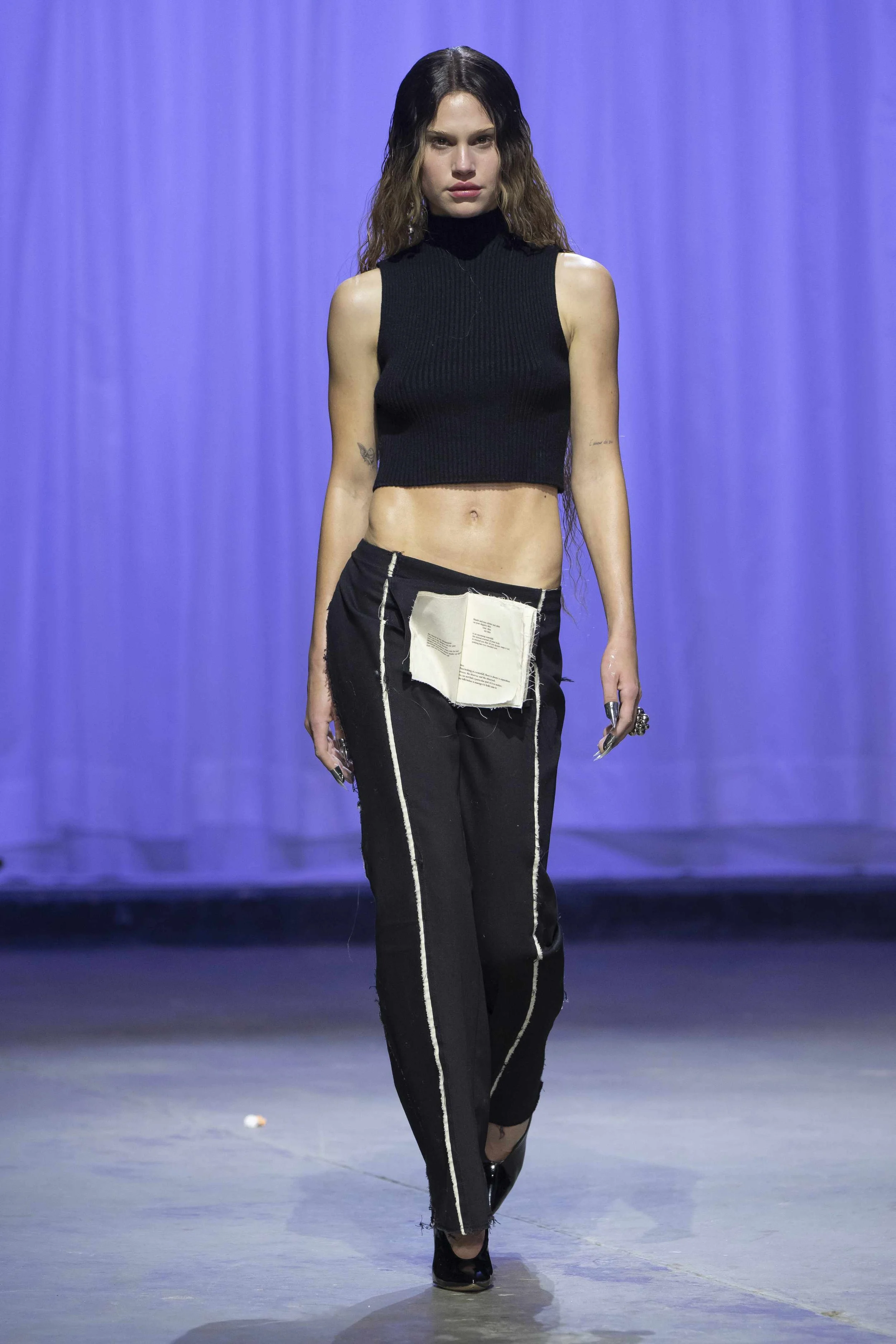HADERLUMP FW25
The Haderlump Atelier lies just a stone’s throw from the Grenzallee U-Bahn station in Berlin-Neukölln. Getting off the train, you're met with grey walls covered in graffiti and green floors that feel far removed from the polished, colorful tiling of central Berlin’s stations. I feel like a character from Haderlump’s latest runway show, rushing through a train station in a long dark coat, with anywhere else but here to be.
In my case, it’s the Haderlump Atelier I have to be at. Johann Ehrhardt, the designer behind the Berlin fashion label, invited me to take a closer look at the AW25 collection. Shown only days ago, the collection has made a splash internationally—an impressive feat for a label that was founded just over three years ago in October 2021.
Johann greets me with a big smile and a firm hug. He’s dressed in all black: a sweater, pants, and combat boots. The studio is lined with six sewing machines, flanked by walls covered in lookbook pictures from AW25, fabric samples pinned beside them. The garments themselves hang on makeshift dressing racks of chains and metal rods. I run my hands through the collection—waxed denim bomber jackets sit next to distressed yet meticulously tailored coats, dresses structured like trench coats.
“When we first moved in here, we only had this room,” Johann tells me, gesturing around the atelier. He points to a doorway that’s half a meter off the ground, with three metal steps leading up to it. “It clashed, having the office, the atelier, and Julius [one of Haderlump’s three founders] taking calls all in the same place, but we knew something was hiding behind there.” They soon expanded into the backroom, now their office, showroom, and storage space. There, I meet the two other co-founders. Julius and Johann’s friendship started years ago, over a beer crate in the park. Johann and Johannes, on the other hand, met at university. Eventually, all three found themselves working at the same bar—until one night, Julius called Johann with an idea. He had just read a book titled Start Something That Matters and, inspired, convinced Johann to start a label.
Listed on Google Maps with opening hours, the atelier has become a stop-in spot for fans and supporters. They have painted a concrete corner of the office green, coated it with epoxy, and added a clothing rack featuring their ready-to-wear line. Four mirrors complete the makeshift showroom. Behind muslin curtains, part of their storage remains tucked away.
Everything in Haderlump’s RTW line is made-to-order from deadstock or vintage fabrics, while their runway pieces are about 90% deadstock, 10% new materials. “The sustainability aspect was especially important to Julius. To me, it was more about the fashion,” Johann admits before quickly adding, “and of course, the sustainability as well.” Their team sources fabrics all over Berlin—sometimes at the Maybachufer market in Kreuzberg, other times through fabric swaps at Berger, a local shop. “They love us,” Johann laughs.
His journey into fashion was anything but conventional. Johann is a trained waiter who once dreamt of becoming a tailor at Chanel’s atelier in Paris. That background makes sense when you see the classical silhouettes infused with the raw, distressed edge we know and love from Berlin designers. Garments are kept in often dark, always neutral tones, looking a little beat—but in the best way possible.
At the showroom the day before, he explained his design process: “I make about ten drawings, give them to the design team, and from there, we make about 400 new drawings before we even start realizing the clothes.” That realization process is heavily trial-and-error based. A sample of a knit skirt made from waxed denim yarn took an intern two weeks to complete. Even post-runway, the team continues tweaking their designs. “We’ll now take a look at everything, see what went well, see what we can improve.”
Each collection comes with its own universe. This AW25 line drew inspiration from train travel, sparked by a story about Mahatma Gandhi. While running to catch a train, Gandhi lost one of his shoes. Instead of leaving with only one, he threw the second onto the tracks—so someone else could find and use the pair. From that anecdote, Haderlump created 28 characters, each with their own backstory based around train travel during the 30s, 40s and 50s, when travel was still an adventure into the complete unknown. A father pushing a metal baby trolley has quickly gone virality online. The quirky accessory was designed by a friend of the label who does furniture design.
At their studio, co-founder and creative director Johann tells me about their beginnings, the right now and what’s yet to come. Despite the brand going well and Johann’s love for the work—he doesn’t see himself at the center of it forever. “At the back of my mind, I do want a family, kids one day. But for now, this is fun. I love pouring my time, energy, and dedication into it.” He wants to build Haderlump into something sustainable—not just in its materials, but as a business. “My goal is to be able to finance a team of ten people full-time, so everyone can live off of this project. As long as it’s fun for everyone, I’ll keep going.” At some point in the future they might even start thinking about an in-house production company that could produce for other berlin-based labels as well.
He thinks of maybe have his own label at some point and maybe bringing a show to Paris. But for now, Berlin is where the energy is. “Berlin is having a moment right now. In Paris, no one knows us. I don’t want to put on a show there just for it to be full of Germans. What’s the point?” he shrugs.
Still, he’s not ruling anything out. “Maybe one day, one time a year in Paris, one time a year in Berlin. That would be perfect.”
Words and Atelier Photography by Lynn Yin Dittel
Backstage Photography by Kevin Duong
What to read next






















